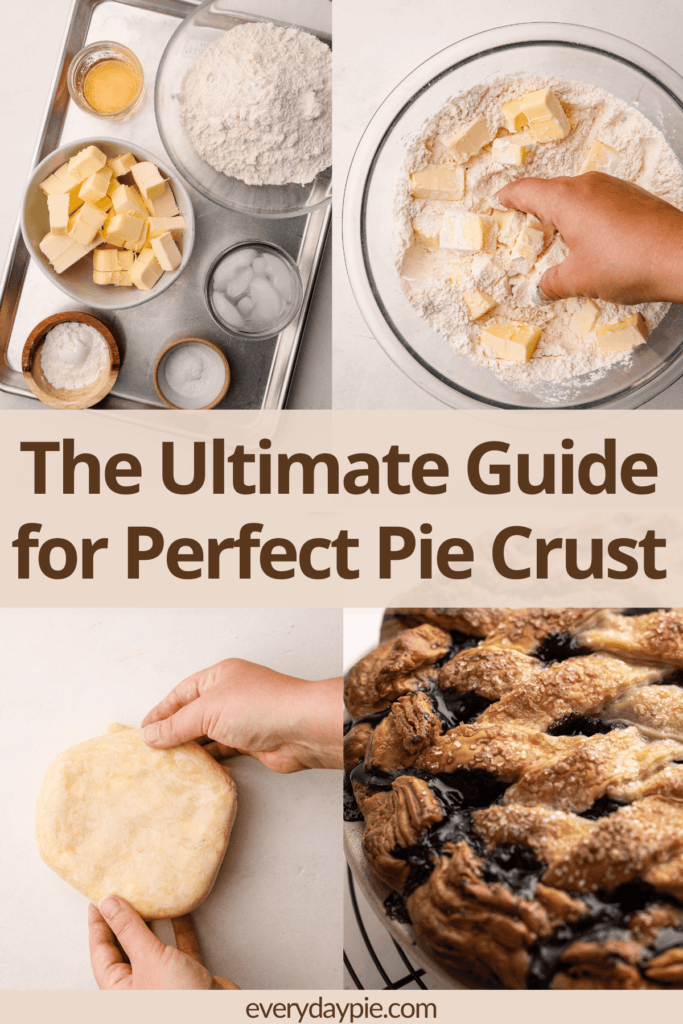How to Make Pie Crust: A Complete Guide to Perfect Pastry
Making the perfect pie crust from scratch is a skill every home baker should master. This comprehensive guide will walk you through everything you need to know about creating a flaky, tender pie crust that will elevate your baking to new heights. Whether you’re a beginner or an experienced baker, these tested techniques and tips will help you achieve professional-quality results.
Essential Ingredients for Perfect Pie Crust
The secret to an exceptional pie-crust lies in understanding its basic components:
- All-purpose flour
- Cold butter and/or shortening
- Ice water
- Salt
- Optional: sugar for sweet pies
The Science Behind Pie-Crust
Understanding the science helps you make better decisions while preparing your pie-crust. The flakiness comes from cold butter pieces creating steam pockets during baking, while the tenderness results from minimal gluten development.
Basic Pie Crust Recipe
This foolproof recipe yields one double-crust pie or two single-crust pies.
Ingredients:
- 2½ cups all-purpose flour
- 1 teaspoon salt
- 1 tablespoon sugar (optional)
- 1 cup cold unsalted butter, cubed
- ¼ to ½ cup ice water
Instructions:
- Combine Dry Ingredients:
- Whisk together flour, salt, and sugar in a large bowl
- Ensure even distribution of ingredients
- Cut in the Fat:
- Add cold butter cubes to the flour mixture
- Use a pastry cutter or fingers to work the butter into pea-sized pieces
- Some larger pieces are okay for extra flakiness
- Add Water:
- Drizzle ice water, one tablespoon at a time
- Toss with a fork until the dough holds together
- Avoid adding too much water
- Form and Chill:
- Divide dough in half
- Shape into disks
- Wrap in plastic
- Refrigerate for at least 1 hour
Advanced Techniques for Perfect Pie Crust

The Importance of Temperature
Temperature control is crucial when making pie crust:
- Keep ingredients cold
- Chill tools if possible
- Work quickly to prevent butter from softening
- Rest dough in the refrigerator between steps
Rolling Out Your Pie Crust
Follow these steps for perfect rolling:
- Let the chilled dough warm slightly
- Flour the work surface lightly
- Roll from the center outward
- Rotate dough frequently
- Maintain circular shape
- Roll to 1/8-inch thickness
Troubleshooting Common Pie Crust Problems
Tough Crust
- Caused by overworking dough
- Solution: Handle dough minimally
- Tip: Stop mixing once dough comes together
Shrinking Crust
- Caused by stretched dough
- Solution: Let dough rest before baking
- Tip: Don’t pull or stretch when fitting to pan
Soggy Bottom
- Caused by underbaking or wet filling
- Solution: Blind bake when appropriate
- Tip: Use high heat initially
Different Types of Pie Crust
All-Butter Crust
Pros:
- Best flavor
- Creates flaky layers
- Golden brown color
Cons:
- More challenging to work with
- Less forgiving in warm conditions
Butter and Shortening Crust
Pros:
- Easier to handle
- More stable
- Still flaky
Cons:
- Less flavor than all-butter
- Contains processed ingredients
Tips for Making Perfect Pie Crust
- Measure Accurately:
- Use proper measuring techniques
- Consider weighing ingredients
- Don’t pack flour
- Keep Everything Cold:
- Chill ingredients before starting
- Use ice water
- Return dough to the fridge if it warms
- Don’t Overwork:
- Mix just until combined
- Handle dough gently
- Avoid excessive rolling
Decorative Pie Crust Techniques
Lattice Top
- Cut strips of dough
- Weave over filling
- Crimp edges
Braided Edge
- Make three thin strips
- Braid together
- Attach to crust edge
Cut-Out Designs
- Use cookie cutters
- Arrange on top crust
- Egg wash for shine
Storage and Make-Ahead Tips
Refrigerator Storage
- Wrapped dough lasts 3 days
- Keep well-sealed
- Let warm slightly before rolling
Freezer Storage
- Freeze up to 3 months
- Double-wrap to prevent freezer burn
- Thaw in refrigerator
Conclusion
Making pie crust from scratch might seem daunting, but with these techniques and tips, you’ll be creating perfect, flaky crusts in no time. Remember that practice makes perfect, and even imperfect homemade pie crust usually tastes better than store-bought. Keep experimenting with different techniques and recipes until you find your perfect pie crust method.
Whether you’re making a sweet dessert pie or savory dinner pie, mastering pie crust is a valuable skill that will serve you well in your baking journey. With patience and attention to detail, you’ll soon be creating picture-perfect pies that taste as good as they look.






